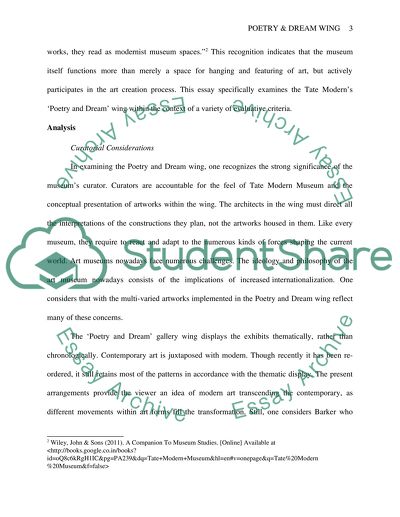Cite this document
(“Tate Modern Museum - Poetry & Dream Wing Essay Example | Topics and Well Written Essays - 2000 words”, n.d.)
Tate Modern Museum - Poetry & Dream Wing Essay Example | Topics and Well Written Essays - 2000 words. Retrieved from https://studentshare.org/miscellaneous/1596555-tate-modern-museum-poetry-dream-wing
Tate Modern Museum - Poetry & Dream Wing Essay Example | Topics and Well Written Essays - 2000 words. Retrieved from https://studentshare.org/miscellaneous/1596555-tate-modern-museum-poetry-dream-wing
(Tate Modern Museum - Poetry & Dream Wing Essay Example | Topics and Well Written Essays - 2000 Words)
Tate Modern Museum - Poetry & Dream Wing Essay Example | Topics and Well Written Essays - 2000 Words. https://studentshare.org/miscellaneous/1596555-tate-modern-museum-poetry-dream-wing.
Tate Modern Museum - Poetry & Dream Wing Essay Example | Topics and Well Written Essays - 2000 Words. https://studentshare.org/miscellaneous/1596555-tate-modern-museum-poetry-dream-wing.
“Tate Modern Museum - Poetry & Dream Wing Essay Example | Topics and Well Written Essays - 2000 Words”, n.d. https://studentshare.org/miscellaneous/1596555-tate-modern-museum-poetry-dream-wing.


